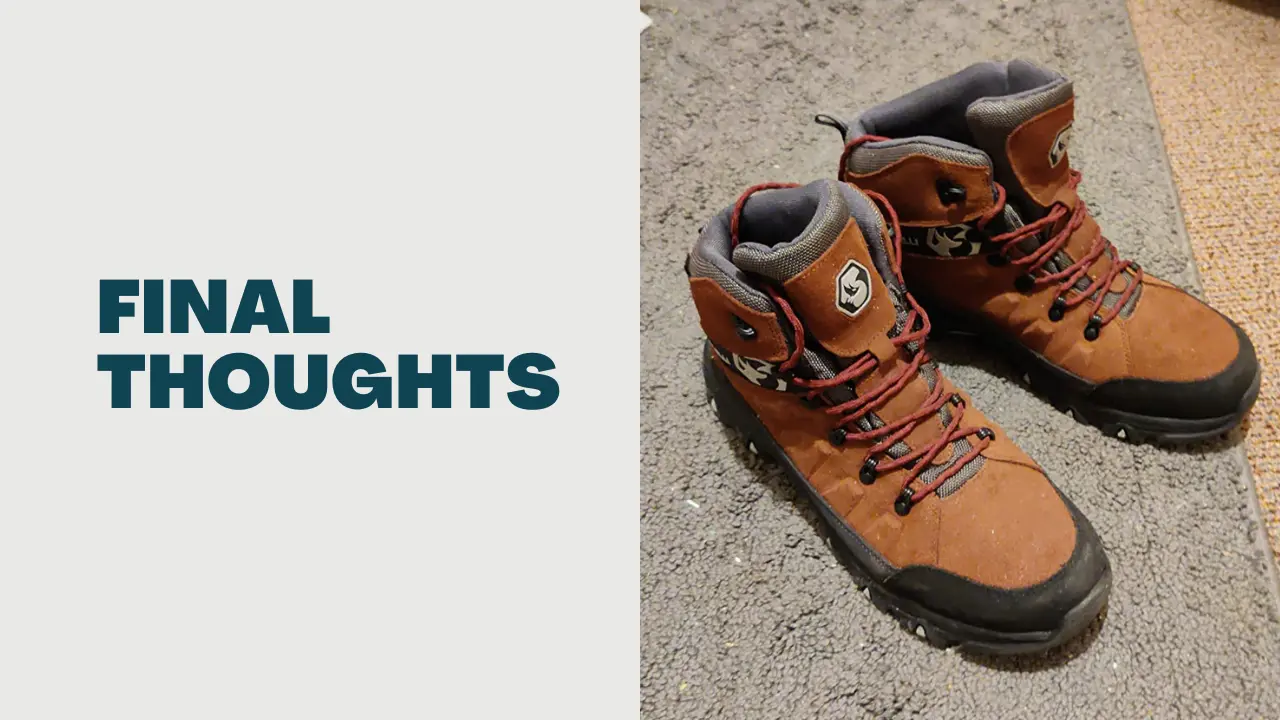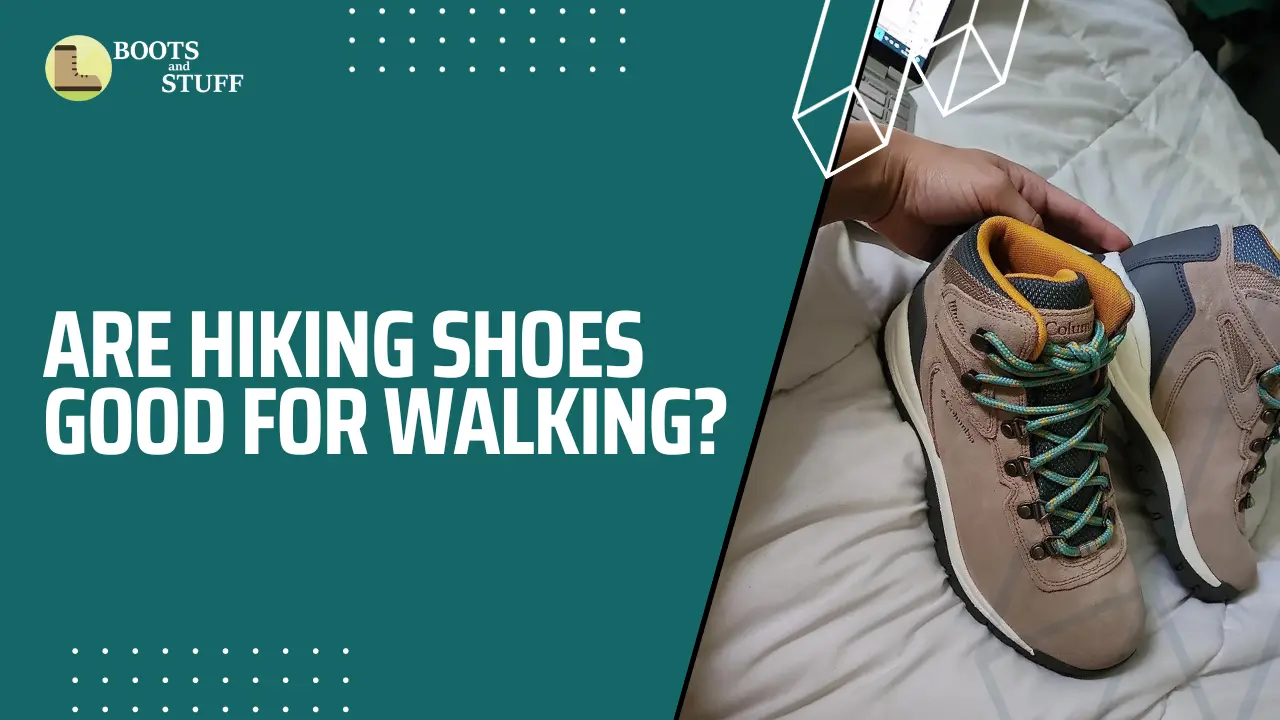Your hiking boots and your foot should be yin and yangs of each other. They have to be in rhythm with each other; the ankles, heel, toes, etc. Or else uneven fit will swell your feet and cause a blister.
A pair of hiking boots that are snug can last forever. That’s why you choose hiking boots carefully, take your time as you go. No matter which hiking shoe you buy, your foot should be in a breathable position and have a cushion.
By the type of hiking you’re doing, the right pair of hiking boots offer good support and keep you fit snugly. This post is a complete guide on how to choose a hiking boot by getting all checkboxes right. Helping you get the right fit.
Let’s get started.
Contents
Key Takeaways:
- There are three types of hiking footwear available.
- Look for boots with cushions (midsole)
- Try on boots before buying.
- Good pair of hiking boots can give 1,000 miles of mileage.
What Types of Hiking Footwear are there?
Hiking footwear depends on the type of hiking you’ll be doing. While there are many types of hiking shoes available, we need to know about three crucial ones. Let’s get into the details.
Low-cut hiking shoes
Low-cut hiking boots, you know, tend to be very lightweight and versatile in features. The low cut surely makes them great for running. If you like a 5k on a rough trail, low-cut hiking shoes are what you’re looking for. The low cut starts just under your ankle. Low-cut hiking shoes are great for casual day hikes.
These boots have a snug but comfortable fit. Unfortunately, most of them don’t have midsoles. However, if you’re a casual day hiker, you might consider checking them out.

Backpacking Shoes
Backpacking shoes are the perfect mixture of both worlds. They’re great if you’re on a trip or have a long hiking session going on. Being both waterproof and durable, they are one of the best types of hiking boots to have.
Backpacking shoes are mid-cut; they start a little over your ankles. You can swap your insoles with whichever cushioning you like. They’re made of full-grain leather, but nowadays, you have the synthetics option too.
Mountaineering Boots
Also known as high-cut shoes. These boots are heavy-duty and rugged, making them perfect for vigorous hiking. These boots have strong traction, soles, laces, and waterproofing membranes. Make sure you clean after each hiking session to avoid waterproof membrane clogging.
Mountaineering boots are taller than regular boots. If you can get your hands on a good pair of these types of boots, you don’t have to worry about getting new boots for a while. Oh, did I tell you they can carry a lot of weight too?

Which Material is Best for Hiking Shoes and Boots?
Traditional pairs of hiking shoes are made of leather. However, more options are becoming available to suit everyone’s budget. Here’s how you find out which one is the best for you.
Full-grain Leather Boots
Full-grain leather boots have strong durability and waterproof membranes. They are mostly found in backpacking boots that have mid-cuts. These boots are best for average to medium-type levels of hiking.
Nevertheless, the only cons of these types of hiking boots are; they are quite expensive. Unless you are a professional hiker, you don’t need full-grain leather boots. There are other hiking boots with the same qualities with a much cheaper price tag.
Split-grain leather boots
They are made out of both leather and synthetics. It’s best for regular hiking, and they provide a secure fit. Split-grain cleaves the inner upper part of the leather. It’s made out of cow head leather and is rough.
Split-grain leather boots are great for overall hiking; you can wear them around all year.
Synthetic Boots
Most people’s hiking life starts with a pair of synthetic boots. Code for: made out of nylon or polyester. They perform best on well-maintained trails.
Synthetic hiking boots are best for beginner hikers. They are budget-friendly and not intimidating-looking. However, synthetic might not be ideal if you plan to wear your shoes for a long time.
Synthetic boots with low cuts can make perfect trail running shoes.
How to Find the Best Fit for Your Hiking Boots
No matter how expensive your hiking boots are, if you don’t have the right fit, it’s useless. So here are some tips to avoid that mistake.
Understand how your feet feel inside the boot
While buying your hiking shoes, wear them and see how you feel. If you feel uncomfortable in them, they are not the right fit.
An uncomfortable fit in your hiking shoes can cause blisters if you hike wearing them for a long time. So you should wear hiking boots with the right fit.
Boots shouldn’t be too tight
Sure, your boots must be firm, but if you feel your toes are excessively tight in a hiking shoe, don’t buy them. The goal is to get the best fit, not the tightest fit. If you’re still confused then here is a recommended blog for you: how to tie hiking boots the right way?.
Leave space in the boots
Your toe shouldn’t fit into each length and width in hiking boots. Always leave some space in front of your toes to breathe. Thank us later.
Check the boot sole; how does the back of the boot feel? Is this a comfortable fit? If you have positive answers, perhaps the hiking shoe has a good overall fit.
Pick the size of the right boots
If you’re purchasing online, stick to the boot size you usually wear. Our feet take time to get adjusted to a new shoe size.
If they are leather boots, they will stretch over time. So while a new shoe size might sound exciting, you’d be causing more harm if you are not careful.
Lastly, if you’re trying on store and face issues, consult with the specialist. They will help you choose the perfect pair of hiking shoes.
Weight of hiking boots
Hiking boots will be heavier than regular shoes. However, if you are trail-running shoes and your boots feel like the weight of the ocean, understand they’re not a good fit for you.
There should be a perfect balance between you and your hiking shoes. The weight ratio can cause better traction and overall better fit. Heavy boots will slow your pace.
Final Thoughts

A good pair of hiking shoes will give you a thousand miles of mileage, at the least. This is considering you took care of your boots. There are mainly three types of hiking boots available; low-cut, mid-cut, and high-cut.
Always be cautious about your shoes’ fitting. Tight-fitting or lose hiking boots are a red flag. They should be avoided at all costs. Your boots should be snug fit, not uncomfortably fit. Leather and synthetics are the most popular materials for hiking boots. Synthetics is the cheaper one.
Give your boots a test drive before confirming your purchase so you know exactly how they feel. Leave some open space in from of the boots to keep your toes free.




